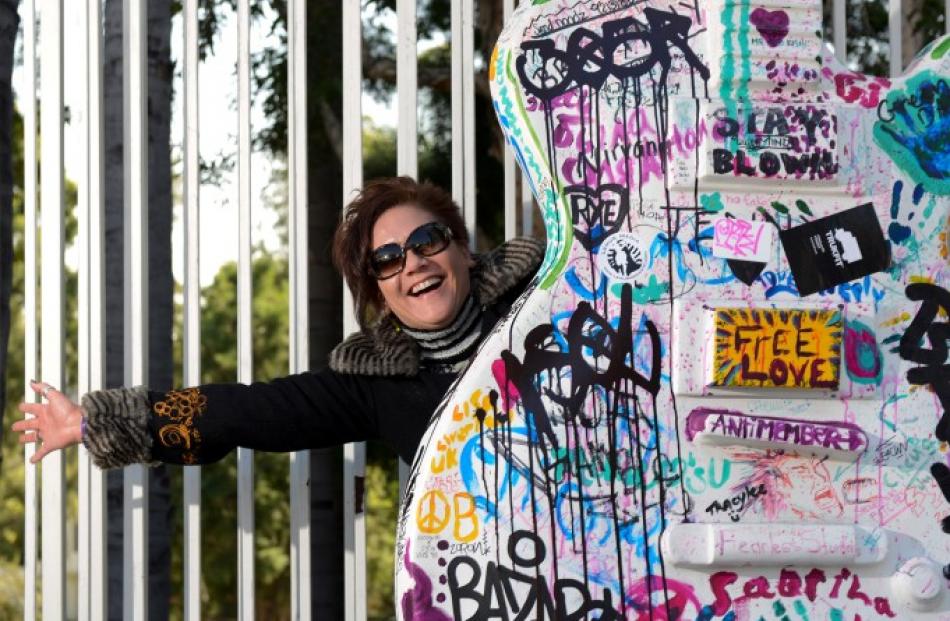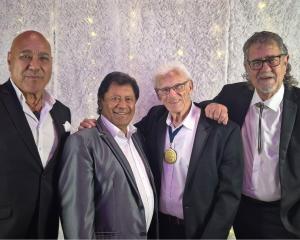Janie Hendrix may not look like her late stepbrother, Jimi, but she sure can sound as psychedelic as the visionary '60s icon.
"When I listen to Hear My Train A Comin', it feels almost ghostlike," she says, squinting into the California sun on a hotel patio. "It's so deep south of the universe and filled with the blues. When we transferred the tapes, my heart got so full I started to cry."
The song in question is one of 12 studio tracks that make up People, Hell and Angels, out this week, yet another outpouring of unreleased music from the prolific guitarist. Experience Hendrix, the corporate entity led by Janie, 51, has over the past decade issued archived music whose bulk now far outweighs the three-album burst that preceded Hendrix's death in 1970 at age 27.
What makes this album intriguing is that it captures Hendrix -- who liked to roll tape whenever he was noodling around -- in an exploratory mood.
Recorded in 1968 and '69 by engineer Eddie Kramer, the songs feature Hendrix as he was pushing beyond his collaboration with Noel Redding and Mitch Mitchell, his British bass-and-drum cohorts in the seminal Jimi Hendrix Experience.
On Somewhere, we hear Stephen Stills sitting in on bass, while Let Me Move You features a guitar and sax duel with an early Hendrix mentor, Lonnie Youngblood. One particularly funky track, Mojo Man, was laid down at fabled FAME Studios in Muscle Shoals, Ala., by twin vocalists Arthur and Albert Allen, known as the Ghetto Fighters, who then shipped the tape to their old friend so he could add his distinctive touch.
The rest of People, Hell and Angels -- a title pulled from reams of lyrics and writings that fill the recently published Jimi Hendrix: The Ultimate Lyric Book -- is anchored by Billy Cox (bass) and Buddy Miles (drums), who would later back the guitarist at Woodstock in the summer of '69 and record a live album with him at the very end of the year as the Band of Gypsys.
The trio's powerful musical shorthand comes alive on Hear My Train, in which the trippy lyrics and hooky riffs of Hendrix's Experience work, typified by Purple Haze and Fire, give way to straight-ahead blues.
"After that incredible three-album run and all the touring, Jimi needed a break to recharge his batteries creatively, so he came to his studio," Electric Lady in New York, says Kramer, who oversaw the sonic end of People.
"He felt he could rely on these new guys (Cox and Miles), and you could see that their back-and-forth communication was great," he says. "Jimi used the studio as rehearsal space. The tape was always running, and thank goodness for that."
Posthumous releases often walk that knife-edge between either adding to the musical canon or diluting it. In fact, sometimes those critically acclaimed original albums really do represent an artist's finest work.
But while the Web is rife with debate over whether the world needs more rock outtakes even from a genius like Hendrix, People, Hell and Angels manages to justify its existence, says Patrick Doyle, assistant editor of Rolling Stone.
"There's always a risk of oversaturating the market, but in this case, these aren't throwaway tracks," Doyle says. "Somewhere in particular seems like required Hendrix listening."
On that track, Hendrix "goes crazy with the wah-wah (pedal), improvising riffs that feel like they could have led to entirely new songs," he says. "You're reminded that Hendrix could have gone in so many different directions. I even hear flashes of modern jazz. Hendrix is almost mythological for a reason."
His legendary status aside, Hendrix was decidedly human, a fact that his sister and his engineer are reminded of each time they delve into another project.
Kramer laughs when recalling Hendrix in the studio. "He thought he had the worst voice. He needed three screens between him and the control booth, and low light, and didn't want anyone looking at him," he says. "He was very shy and self-effacing. Of course, on stage he changed completely, like Jekyll and Hyde."
Turning the knobs for Hendrix gave South African-born Kramer, who also has worked with bands such as The Beatles and Led Zeppelin, a front-row seat to history. "Watching genius in action is eye-opening," he says. "It changes your life."
Although Janie met her famous brother only a few times, she vividly recalls the advice he gave her shortly before he died. It was during a visit home to Seattle, where funds are being raised to build Jimi Hendrix Park near his old high school.
"He whispered in my ear, 'Janie, keep a notebook handy, and always write down your thoughts and your dreams,' " she says. "It's clear he did that, because they became his songs."
Hendrix says People "could be the last of the studio releases," and that the company's new focus will be on a trove of live concert recordings and videos. A documentary also could be forthcoming.
"Jimi's music is the thread to many tapestries of sound," says Hendrix of a musician who, four decades after his death, is perpetually at the top of magazine polls ranking rock's best guitarists. (Writing in Rolling Stone, Tom Morello said Hendrix's "lead lines were an electric LSD trip down to the crossroads.")
"He's a kid who watched cartoons, listened to pop-music 45s, then picked up a guitar and, hearing it all, implemented his own sound," Hendrix says. "He's not here, but his music continues on."













